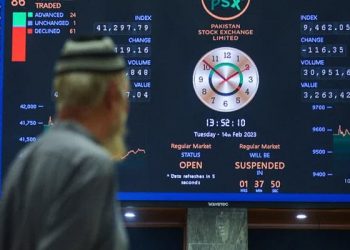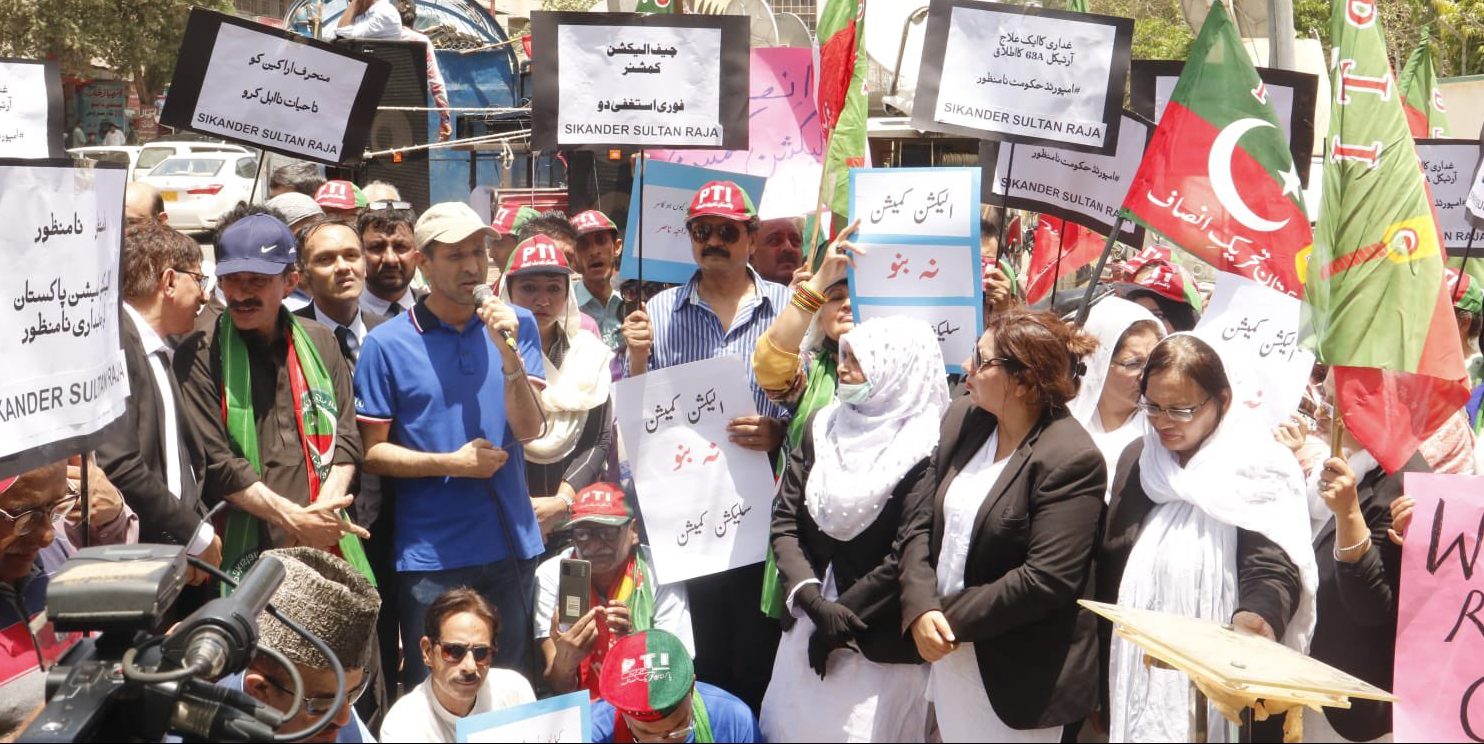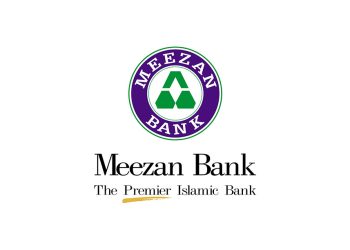In the ever-evolving landscape of global finance, understanding currency exchange rates is more than a necessity—it’s an art. As we venture into 2024, the USD to PKR exchange rate continues to be a topic of keen interest for investors and businesses alike. Today, as per the State Bank of Pakistan, the USD to PKR Mark-to-Market Revaluation Rate stands at 279.8961, with a weighted average bid of 279.7127 and an offer rate of 280.1525.
This introduction sets the stage for a deeper dive into the dynamics of these rates, exploring not just the numbers but the stories they tell. How do global economic events, local market sentiments, and political landscapes intertwine to paint the bigger picture of these exchange rates? Let’s embark on this analytical journey to decode the intricacies of the financial world.
HERE’S A DETAILED SUMMARY OF THE CURRENT TRENDS AND INSIGHTS REGARDING THE USD TO PKR EXCHANGE RATES:
- Current Exchange Rates: As of January 19, 2024, the USD to PKR exchange rate closed at 1 USD = 280.08 PKR, with the best rate being 1 USD = 279.8961 PKR and the worst at 1 USD = 276.33 PKR. The average exchange rate in 2024 has been around 280.1409 PKR, with the highest rate reaching 281.9502 PKR on January 2, 2024, and the lowest being 276.8519 PKR on January 13, 2024.
- Predictions and Forecasts: Analysts anticipate a potential weakening of the USD against the PKR in the near term. This expected trend is attributed to several factors:
- The Federal Reserve is predicted to start cutting interest rates in March, potentially putting downward pressure on the USD.
- A possible ‘risk-on rally’ in global markets could reduce demand for safe-haven currencies like the USD.
- Political uncertainties in the US, especially regarding the presidential election and the Republican candidacy, could introduce volatility in the exchange rate.
- Record remittances sent back home by migrant workers, particularly from Pakistan, are supporting the PKR amidst a bleak job market in the Middle East.
- Market Stability: Despite some fluctuations, the USD to PKR exchange rate has remained relatively stable, trading within a 5.6% range between 275.0 PKR and 290.5 PKR. As of the latest data, the exchange rate stands at 279.4 PKR, which is 1.1% below its three-month average of 282.4 PKR.
- Long-term Trends: Over a longer period, there has been a significant increase in the USD to PKR rate. For instance, comparing the rates over the years shows a considerable rise from 57 PKR in 2004 to 280.08 PKR in 2024.
This data provides a comprehensive overview of the current state and potential future trends of the USD to PKR exchange rates, which are critical for investors and businesses involved in the Pakistan stock market.
NOW BACK TO THE EVERYTHING YOU NEED TO KNOW ABOUT PKR TRENDS. OK NOT ALL BUT ENOUGH
NAVIGATING THE WAVES OF CURRENCY EXCHANGE: A CLOSER LOOK AT USD TO PKR RATES
In the ever-evolving landscape of global finance, understanding currency exchange rates is more than a necessity—it’s an art. As we venture into 2024, the USD to PKR exchange rate continues to be a topic of keen interest for investors and businesses alike. Today, as per the State Bank of Pakistan, the USD to PKR Mark-to-Market Revaluation Rate stands at 279.8961, with a weighted average bid of 279.7127 and an offer rate of 280.1525.
This introduction sets the stage for a deeper dive into the dynamics of these rates, exploring not just the numbers but the stories they tell. How do global economic events, local market sentiments, and political landscapes intertwine to paint the bigger picture of these exchange rates? Let’s embark on this analytical journey to decode the intricacies of the financial world.
CURRENT EXCHANGE RATE ANALYSIS
THE CURRENT PULSE OF USD TO PKR: A DETAILED EXAMINATION
As we delve into the numbers, the current USD to PKR exchange rates reveal a captivating narrative of economic forces at play. The State Bank of Pakistan’s latest data shows the Mark-to-Market Revaluation Rate at 279.8961. But what does this number tell us about the market’s health and investor sentiment?
- Understanding the Numbers: At first glance, the exchange rate of 279.8961 might seem like just another statistic. However, it’s a pivotal indicator of economic stability and investor confidence in Pakistan’s economy. This rate is influenced by a multitude of factors, ranging from international trade balances to domestic fiscal policies.
- Fluctuations and Their Implications: The movement in exchange rates isn’t random; it’s a reflection of the market’s response to real-world events. For instance, a significant rise or drop in the USD to PKR rate could signal changes in foreign investment flows or alterations in economic policies.
- Comparative Analysis: How does today’s rate compare with historical data? Looking back at the trends over the past few years, we can observe how external factors like global economic health and internal dynamics like political stability have influenced these fluctuations.
In this section, we have dissected the current USD to PKR rates to understand their broader implications. But this is just the tip of the iceberg. In the following sections, we will delve deeper into the factors driving these changes and strategies to navigate these waters.
FACTORS INFLUENCING THE USD TO PKR RATES
DECODING THE DRIVERS: WHAT INFLUENCES THE USD TO PKR EXCHANGE RATES?
Understanding the dynamics of the USD to PKR exchange rate requires a deep dive into the myriad of factors that play a role in shaping it. These factors span from global economic shifts to local market forces, each weaving into the complex tapestry of currency valuation.
- Global Economic Events: The international economic landscape significantly impacts currency exchange rates. For instance, policy changes by major central banks, like the Federal Reserve’s interest rate decisions, can sway the USD’s strength. Similarly, global trade tensions or economic stability in major economies can ripple through to affect the USD to PKR rate.
- Political Climate and Policies: Political stability and government policies within Pakistan also play a crucial role. Economic reforms, trade policies, and fiscal decisions can alter investor confidence, thereby influencing the currency’s strength. Additionally, international political events, such as the US Presidential elections, can introduce uncertainty, affecting currency markets worldwide.
- Trade and Remittances: Pakistan’s trade balance, particularly the import-export gap, directly influences the PKR’s value. A higher demand for USD due to increased imports can lead to PKR depreciation. Conversely, strong remittances from overseas Pakistanis bolster the PKR, providing a counterbalance.
- Speculation and Market Sentiment: Market speculation and investor sentiment often drive short-term fluctuations in exchange rates. Investors’ perceptions of future market conditions, based on economic indicators and geopolitical developments, can lead to significant movements in the USD to PKR rate.
In this section, we explored the multifaceted factors that influence the USD to PKR exchange rates. Understanding these elements is crucial for investors and businesses to make informed decisions. Next, we will look at strategies for navigating and leveraging the current exchange rate situation.
STRATEGIES FOR INVESTORS AND BUSINESSES
NAVIGATING FLUCTUATING EXCHANGE RATES: INSIGHTS FOR INVESTORS AND BUSINESSES
In a landscape where the USD to PKR exchange rate is continually fluctuating, investors and businesses must adopt strategies to not only mitigate risks but also seize potential opportunities. Here are some insights and strategies to consider:
- Hedging against Currency Risk: For businesses engaged in international trade, currency fluctuations can pose a significant risk. Hedging, through financial instruments like forwards, futures, or options, can help lock in exchange rates and protect against adverse movements.
- Diversifying Investment Portfolios: Investors can mitigate the risk associated with currency fluctuations by diversifying their investment portfolios. This can include investing in a mix of assets, such as stocks, bonds, and commodities, which may respond differently to currency changes.
- Staying Informed and Agile: Keeping abreast of market trends, economic forecasts, and political developments is crucial. This knowledge enables both investors and businesses to react swiftly to changes in exchange rates, adjusting strategies as necessary.
- Leveraging Exchange Rate Movements: For savvy investors, fluctuating exchange rates can present opportunities. For example, a weakening USD against the PKR could be opportune for investing in dollar-denominated assets, anticipating potential gains when the trend reverses.
- Long-term Planning: While short-term fluctuations can be important, maintaining a long-term perspective is essential. Long-term strategies should account for historical trends and potential future shifts in currency values.
By employing these strategies, investors and businesses can navigate the complexities of fluctuating exchange rates, turning potential challenges into opportunities for growth and stability.
MARKET PREDICTIONS AND FUTURE OUTLOOK
PEERING INTO THE FUTURE: WHAT LIES AHEAD FOR USD TO PKR RATES?
In the realm of finance, predictions are often as much an art as they are a science. While exact future movements of the USD to PKR exchange rates are uncertain, analyzing current trends and expert forecasts can provide us with a glimpse into what the future might hold.
- Analysts’ Predictions: Many financial analysts predict a potential weakening of the USD against the PKR in the near term. Factors such as the anticipated interest rate cuts by the Federal Reserve and political uncertainties in the US, including the upcoming Presidential elections, are expected to influence this trend.
- Impact of Global Economic Trends: Global economic health, especially in major economies, will continue to be a significant determinant of exchange rate movements. Any shifts in global trade policies or economic recovery patterns post-pandemic will play a crucial role.
- Local Economic Factors: Domestically, Pakistan’s economic policies, trade balance, and political stability will be key in shaping the PKR’s strength. Robust remittances from overseas Pakistanis and the country’s economic growth trajectory will also be vital factors to watch.
- Market Volatility and Opportunities: While predicting exchange rates can be challenging, this volatility can create opportunities for investors and businesses. Staying informed and adaptable will be key to leveraging these market movements.
- A Word of Caution: As with all forecasts, it’s important to remember that predictions are not guarantees. Market conditions can change rapidly, influenced by unforeseen global and local events.
In this section, we have explored some of the predictions and potential future trends for the USD to PKR exchange rates. While the future is always in motion, staying informed and prepared is the best strategy for navigating the financial markets.
IMPACT ON PAKISTAN STOCK MARKET AND LOCAL BUSINESSES
THE RIPPLE EFFECT: HOW USD TO PKR RATES INFLUENCE PAKISTAN’S ECONOMY
The fluctuation of the USD to PKR exchange rates doesn’t just stay confined to currency markets; it cascades across the Pakistan stock market and permeates various sectors of the local economy. Let’s examine how these exchange rate movements impact different industries:
- Stock Market Sensitivity: The Pakistan stock market often reacts to significant shifts in the USD to PKR rates. A stronger PKR may boost investor confidence, potentially leading to a surge in stock prices, especially in sectors like banking and manufacturing that benefit from a stable currency. Conversely, a weaker PKR can create uncertainty, affecting market sentiment.
- Import-Dependent Industries: Industries reliant on imports, such as electronics, automotive, and pharmaceuticals, are particularly sensitive to USD to PKR rate changes. A stronger USD can increase import costs, squeezing profit margins, and potentially leading to higher prices for consumers.
- Export-Oriented Sectors: Conversely, sectors that heavily rely on exports, such as textiles and agriculture, may benefit from a weaker PKR. The lower currency value can make Pakistani exports more competitive on the global market, potentially boosting sales and profits.
- Local Businesses and Consumer Prices: Fluctuations in exchange rates can also impact local businesses and consumer prices. A depreciating PKR can lead to inflationary pressures, affecting the purchasing power of consumers and the operational costs of businesses.
- Foreign Investment: The exchange rate movements can influence foreign investment flows into Pakistan. A stable or appreciating PKR may attract more foreign investors, looking to capitalize on the stronger currency and potential growth opportunities in the local market.
In summary, the USD to PKR exchange rates hold significant sway over the Pakistan stock market and various sectors of the economy. Understanding these connections is vital for businesses, investors, and policymakers to navigate the economic landscape effectively.
IMPACT ON VARIOUS SECTORS AND INDUSTRIES IN PAKISTAN
SECTOR-SPECIFIC IMPACTS OF USD TO PKR EXCHANGE RATE FLUCTUATIONS
- Textile and Garment Sector: As a significant export-oriented sector, the textile and garment industry in Pakistan can benefit from a weaker PKR, as it makes exports more competitive internationally. However, increases in the cost of imported raw materials could offset some of these gains.
- Agriculture Sector: Fluctuations in the USD to PKR rate can impact the cost of imported agricultural inputs like machinery and fertilizers, affecting overall production costs and market prices.
- Technology and Electronics: This sector, heavily reliant on imports, faces increased costs when the PKR weakens against the USD. This can lead to higher prices for consumers and potential decreases in demand.
- Automotive Industry: Similar to technology, the automotive sector, which imports various components, can experience cost pressures due to unfavorable exchange rate movements. This could affect both production costs and vehicle prices.
- Pharmaceuticals: The pharmaceutical industry, which relies on imported raw materials, is sensitive to exchange rate changes. A weaker PKR can lead to increased medicine prices, impacting both businesses and consumers.
BROADER ECONOMIC IMPLICATIONS
- Inflation and Consumer Spending: Fluctuations in exchange rates can contribute to inflation, particularly if the PKR weakens significantly. This can affect consumer spending power and overall economic health.
- Foreign Direct Investment (FDI): The stability and strength of the PKR can influence FDI flows. A stable or strengthening PKR might attract more foreign investment, while a volatile currency could deter investors.
- Government Debt and Fiscal Policy: Exchange rate movements can impact the government’s debt servicing costs, especially for foreign-denominated debt. This could influence broader fiscal policies and economic stability.
- Balance of Trade: The exchange rate directly affects the balance of trade. A weaker PKR can improve the trade balance by making exports cheaper, but it also increases the cost of imports.
These sections aim to provide a nuanced understanding of how the USD to PKR exchange rates impact various sectors and the broader economy in Pakistan. By examining these effects, businesses and investors can better strategize and adapt to these dynamic financial conditions.
ECONOMIC AND SECTORAL IMPACTS OF USD TO PKR EXCHANGE RATE MOVEMENTS
MONETARY POLICY AND LIQUIDITY MANAGEMENT
- Central Bank Surveys and Monetary Aggregates: Discuss how the State Bank of Pakistan’s monetary policy instruments, including open market operations and reserve money, are influenced by the USD to PKR exchange rates.
FINANCIAL SECTOR STABILITY AND PERFORMANCE
- Financial Soundness Indicators: Analyze how fluctuations in exchange rates affect the banking sector’s stability, including the impacts on banks’ foreign currency reserves and non-performing loans.
TRADE AND INVESTMENT FLOWS
- Balance of Payments and Foreign Investment: Examine the effect of exchange rate movements on the balance of payments, trade deficits, and foreign direct investment, referencing the bank’s comprehensive data on these matters.
GOVERNMENT FINANCES
- Government Debt and Securities: Review how the exchange rate influences the government’s ability to service external debt and the attractiveness of government securities to both domestic and foreign investors.
SECTORAL FINANCING AND GROWTH
- Sectoral Credit Allocation: Explore the distribution of credit across different sectors, such as agriculture and textiles, and how exchange rate trends impact sectoral growth and financing.
INTERNATIONAL TRANSACTIONS
- Workers’ Remittances and Foreign Exchange Reserves: Highlight the role of workers’ remittances in stabilizing the PKR and how exchange rate volatility can affect the flow of these funds and the level of foreign exchange reserves.
Each section will draw on the relevant data from the State Bank of Pakistan to provide a detailed analysis of how the USD to PKR exchange rates impact these areas.
ADDITIONAL SECTORS
Monetary Policy and Liquidity Management
In this section, we would delve into the State Bank of Pakistan’s latest monetary policy reports and examine open market operation histories. The analysis would explore how the central bank’s monetary instruments are influenced by and respond to the volatility in USD to PKR exchange rates, affecting liquidity and credit availability in the economy.
Financial Sector Stability and Performance
This part would draw from the Financial Soundness Indicators, focusing on the banking sector’s health and its ability to withstand exchange rate pressures. It would also analyze the trends in banks’ foreign currency reserves and non-performing loans, showing how these are impacted by significant exchange rate movements
Trade and Investment Flows
Here, we would assess the impact of USD to PKR rates on trade deficits and the flow of foreign direct investment. By referencing the balance of payments data, we could provide insights into how exchange rate trends can affect Pakistan’s trade relations and attractiveness to foreign investors.
Government Finances
The focus would be on the government’s external debt servicing obligations and the demand for government securities. We would analyze how fluctuations in the USD to PKR rates influence the government’s fiscal policy and debt management strategies.
Sectoral Financing and Growth
In this section, we would look at credit distribution across various sectors, such as agriculture, manufacturing, and services, and how exchange rate movements can affect their growth prospects and financing conditions.
International Transactions
Lastly, we would highlight the critical role of workers’ remittances in stabilizing the PKR and the interplay between exchange rate volatility, remittance flows, and foreign exchange reserve levels.
BLOG POST CONCLUSION
EMBRACING THE FINANCIAL JOURNEY: STAYING INFORMED AND PREPARED
As we wrap up our exploration of the USD to PKR exchange rates, it’s clear that navigating the currency market is a journey of continuous learning and adaptation. The intricate dance between global and local factors, economic policies, and market sentiments underscores the dynamic nature of financial markets.
For investors and businesses alike, the key takeaway is the importance of staying informed and agile. Understanding the current trends, preparing for potential future shifts, and employing strategic approaches to investment and business decisions can make a significant difference in navigating the financial landscape.
Remember, in the world of finance, knowledge is power. By keeping abreast of market trends and economic forecasts, and by being open to adapting strategies as needed, you position yourself to not only weather the storms but also to ride the waves of opportunity.
We invite you to continue this journey of financial discovery with us. Stay informed, stay prepared, and most importantly, stay engaged in the ever-evolving story of the financial world.



















